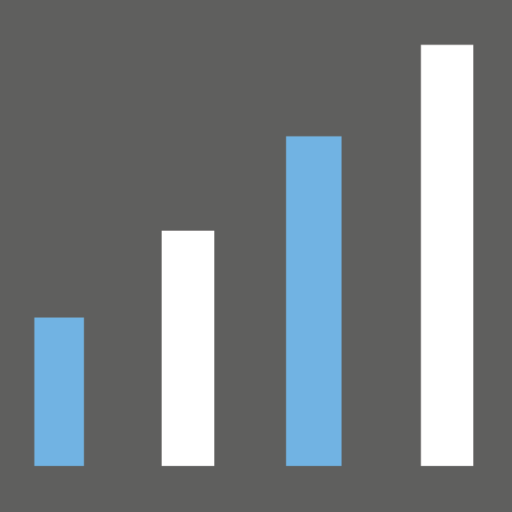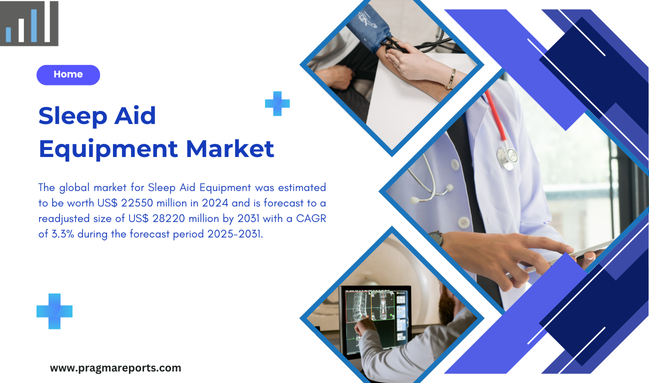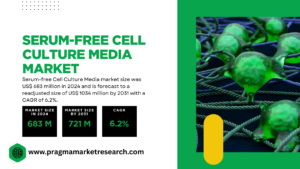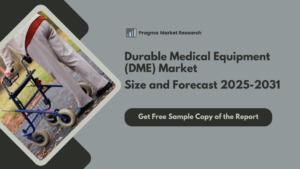Table of Contents
- Introduction to Sleep Aid Equipment Market
- Market Overview and Growth Projections
- Key Players in the Sleep Aid Equipment Market
- Regional Analysis and Market Distribution
- Market Segmentation by Type
- Market Segmentation by Application
- Wearable vs. Non-Wearable Equipment
- Driving Factors in the Market
- Challenges and Limitations
- Future Trends and Opportunities
- Competitive Landscape Analysis
- Regulatory Environment
- Related Reports
- Frequently Asked Questions
Introduction to Sleep Aid Equipment Market
The Sleep Aid Equipment Market focuses on devices designed to improve sleep quality and address sleep disorders. This includes a variety of products ranging from wearable devices that track sleep patterns to non-wearable devices that promote relaxation and better sleep environments.
The market is driven by an increasing awareness of sleep disorders, rising stress levels, and a growing demand for non-pharmacological solutions to improve sleep. Sleep Aid Equipment offers consumers tools to monitor, manage, and enhance their sleep, addressing issues like insomnia, sleep apnea, and restless legs syndrome.
With technological advancements and increasing health consciousness, the Sleep Aid Equipment Market is poised for growth, providing consumers with innovative solutions for achieving better sleep and overall well-being.
Market Overview and Growth Projections
The global market for Sleep Aid Equipment was estimated to be worth US$ 22550 million in 2024 and is forecast to a readjusted size of US$ 28220 million by 2031 with a CAGR of 3.3% during the forecast period 2025-2031.
This growth is driven by a combination of factors, including increasing awareness of sleep disorders, the availability of innovative products, and the growing adoption of sleep aid equipment by consumers seeking non-pharmacological solutions. The Sleep Aid Equipment Market is expected to see steady expansion, with technological advancements and evolving consumer preferences shaping its future.
The Sleep Aid Equipment Market is also influenced by the rising prevalence of sleep disorders such as insomnia and sleep apnea. These conditions drive the demand for effective and accessible sleep aid solutions, contributing to the market’s growth. The market is expected to evolve with continuous innovations and increasing adoption by health-conscious consumers.
Key Players in the Sleep Aid Equipment Market
The Sleep Aid Equipment Market includes a variety of companies, from established healthcare brands to innovative startups. Cambridge Sleep Sciences focuses on evidence-based sleep solutions, while Solace Lifesciences offers products that promote relaxation and better sleep.
Zeez Sleep is known for its sleep-enhancing devices, and PEGASI focuses on light therapy solutions. Fisher Wallace provides cranial electrotherapy stimulation (CES) devices for sleep and mental health. Other key players include Homerion Laboratory, Electromedical Products International, Dodow, Somnox, SomniResonance, and SleepCogni.
These companies contribute to the competitive landscape by offering a range of products, from wearables that track sleep patterns to non-wearable devices that create optimal sleep environments. The Sleep Aid Equipment Market is characterized by innovation and a focus on providing effective, non-pharmacological solutions to improve sleep quality.
| Company | Headquarters | Key Products | Market Share (%) |
|---|---|---|---|
| Cambridge Sleep Sciences | Cambridge, UK | Sleep tracking devices | 12% |
| SNOOZ | Chicago, IL, USA | Sound machines | 10% |
| Solace Lifesciences | Montreal, Canada | Weighted blankets, sleep masks | 9% |
| Fisher Wallace | New York, NY, USA | CES devices | 7% |
Regional Analysis and Market Distribution
The global Sleep Aid Equipment Market is segmented into North America, Europe, Asia Pacific, South America, and the Middle East & Africa. North America holds the largest market share due to high awareness of sleep disorders and the availability of advanced healthcare infrastructure.
Europe is the second-largest market, with a growing emphasis on sleep health and innovative sleep solutions. Asia Pacific is expected to be the fastest-growing region, driven by increasing disposable incomes, rising stress levels, and growing awareness of sleep-related issues in countries like China and India.
South America and the Middle East & Africa are emerging markets with increasing adoption of sleep aid equipment as awareness grows and healthcare infrastructure improves. The regional distribution of the Sleep Aid Equipment Market reflects varying levels of awareness, economic development, and healthcare access across different regions.
Market Segmentation by Type
The Sleep Aid Equipment Market is segmented by type into wearable and non-wearable equipment. Wearable devices include sleep trackers, smartwatches, and other devices that monitor sleep patterns and provide data to improve sleep quality. These devices are popular due to their ability to offer personalized insights and recommendations.
Non-wearable equipment includes sound machines, light therapy devices, weighted blankets, and other products that create a conducive sleep environment. These products are favored for their ease of use and ability to promote relaxation and better sleep without the need for direct body contact.
Both wearable and non-wearable equipment cater to different consumer preferences and needs, contributing to the overall growth of the Sleep Aid Equipment Market.
Market Segmentation by Application
The global Sleep Aid Equipment Market is segmented by application into online sales and offline sales. Online sales have seen significant growth due to the convenience of e-commerce platforms and the ability to reach a broader consumer base. Online channels offer a wide variety of products and detailed information, attracting consumers seeking sleep solutions.
Offline sales, through retail stores, pharmacies, and specialty shops, remain an important channel, providing consumers with the opportunity to physically examine products and receive personalized advice. Offline sales are particularly relevant for products that require demonstration or consultation.
The Sleep Aid Equipment Market benefits from both online and offline sales channels, each catering to different consumer preferences and purchasing behaviors. The balance between these channels is crucial for maximizing market reach and consumer engagement.
| Application | Market Share (%) | Growth Drivers | Key Trends |
|---|---|---|---|
| Online Sales | 60% | Convenience, broader reach | E-commerce platforms, digital marketing |
| Offline Sales | 40% | Personalized advice, physical examination | Retail stores, specialty shops |
Wearable vs. Non-Wearable Equipment
The Sleep Aid Equipment Market features two primary categories: wearable and non-wearable equipment. Wearable devices, such as sleep trackers and smartwatches, offer continuous monitoring of sleep patterns, providing users with detailed insights into their sleep quality. These devices often sync with mobile apps, offering personalized recommendations for improving sleep.
Non-wearable equipment includes sound machines, light therapy devices, weighted blankets, and aromatherapy diffusers. These products focus on creating an optimal sleep environment by addressing factors such as noise, light, and temperature. Non-wearable solutions are generally easier to use and do not require direct contact with the body, making them suitable for a wide range of users.
The choice between wearable and non-wearable equipment depends on individual preferences and needs. While wearables offer detailed tracking and personalized data, non-wearables provide simple, effective solutions for creating a better sleep environment. Both categories contribute to the overall growth and diversity of the Sleep Aid Equipment Market.
Driving Factors in the Market
Several factors are driving the growth of the Sleep Aid Equipment Market. The increasing prevalence of sleep disorders, such as insomnia and sleep apnea, is a major driver, as more people seek solutions to improve their sleep quality. Rising stress levels and sedentary lifestyles also contribute to sleep problems, increasing the demand for sleep aid equipment.
Growing awareness of the importance of sleep for overall health and well-being is another significant factor. As more people recognize the impact of sleep on their physical and mental health, they are more likely to invest in sleep aid solutions. Technological advancements in sleep tracking and monitoring devices also play a crucial role, making it easier for consumers to manage their sleep.
The availability of a wide range of sleep aid equipment through online and offline channels further supports market growth, providing consumers with easy access to innovative and effective sleep solutions. These driving factors are expected to sustain the growth of the Sleep Aid Equipment Market in the coming years.
Challenges and Limitations
Despite the positive growth trends, the Sleep Aid Equipment Market faces several challenges and limitations. The high cost of some advanced sleep aid devices can be a barrier for many consumers, limiting their accessibility. The lack of clinical evidence for the effectiveness of certain sleep aid products is also a concern, as consumers seek reliable and proven solutions.
Data privacy and security issues related to wearable sleep tracking devices can deter some users, as they may be concerned about the storage and use of their personal sleep data. Competition from traditional sleep aids, such as medications and therapies, also poses a challenge, as these options may be preferred by some consumers.
The need for regulatory oversight and standardization in the sleep aid equipment industry is crucial to ensure product safety and effectiveness. Addressing these challenges is essential for fostering trust and promoting the widespread adoption of sleep aid equipment.
Future Trends and Opportunities
The Sleep Aid Equipment Market is expected to see several key trends in the future. The integration of artificial intelligence (AI) and machine learning (ML) in sleep tracking and monitoring devices will enable more personalized and accurate sleep analysis, providing users with tailored recommendations for improving sleep.
The development of smart sleep environments, incorporating features such as automated lighting, temperature control, and sound management, will create holistic sleep solutions. The increasing use of telehealth and remote monitoring will allow healthcare providers to track and manage patients’ sleep remotely, improving access to sleep care.
The emergence of new sleep aid technologies, such as transcranial magnetic stimulation (TMS) and digital therapeutics, will offer innovative solutions for addressing sleep disorders. These trends are expected to shape the future of the Sleep Aid Equipment Market, enhancing the effectiveness and accessibility of sleep solutions.
Competitive Landscape Analysis
The Sleep Aid Equipment Market is characterized by a diverse range of players, from established healthcare companies to innovative startups. Key competitive strategies include product innovation, brand building, strategic partnerships, and geographic expansion. Companies focus on developing unique features, improving product design, and enhancing user experience to gain a competitive edge.
Strategic partnerships with healthcare providers, sleep clinics, and technology companies are common, enabling companies to expand their reach and integrate their products into broader healthcare ecosystems. Brand building through marketing and education initiatives is essential for establishing trust and credibility among consumers. Companies also focus on expanding their geographic presence to tap into new markets and consumer segments.
The competitive landscape is expected to intensify as the market grows, with companies continuously seeking new ways to differentiate themselves and meet the evolving needs of consumers. The ability to offer effective, reliable, and user-friendly sleep solutions will be crucial for success in the Sleep Aid Equipment Market.
| Competitive Strategy | Description | Example | Benefit |
|---|---|---|---|
| Product Innovation | Developing unique and effective sleep aid solutions | Smart sleep trackers with AI-powered insights | Attracts tech-savvy consumers seeking personalized solutions |
| Brand Building | Establishing trust and credibility through marketing and education | Content marketing on sleep health and product benefits | Enhances consumer confidence and product adoption |
| Strategic Partnerships | Collaborating with healthcare providers and sleep clinics | Integrating sleep aid equipment into patient care plans | Expands market reach and provides expert validation |
| Geographic Expansion | Entering new markets and consumer segments | Tailoring products and marketing to local preferences | Increases global market share and revenue |
Regulatory Environment
The Sleep Aid Equipment Market is subject to varying regulatory requirements depending on the type of product and the region. Wearable sleep trackers and monitoring devices may be subject to regulations related to medical devices or consumer electronics, depending on their intended use and functionality.
Non-wearable devices, such as light therapy devices and sound machines, may be subject to safety standards and electromagnetic compatibility (EMC) regulations. Companies must ensure that their products comply with these regulations to avoid penalties and ensure consumer safety. The regulatory environment is evolving, with increasing scrutiny on the accuracy and reliability of sleep tracking devices.
Compliance with regulatory requirements is essential for building trust and credibility in the Sleep Aid Equipment Market. Companies that prioritize safety and quality are better positioned to gain consumer confidence and succeed in the long term.
Frequently Asked Questions
The global Sleep Aid Equipment Market is projected to grow at a CAGR of 3.3% from 2025 to 2031. The market is expected to increase from US$ 22550 million in 2024 to US$ 28220 million by 2031. This growth is driven by factors such as increasing awareness of sleep disorders, rising stress levels, and a growing demand for non-pharmacological sleep solutions.
The leading players in the global Sleep Aid Equipment Market include Cambridge Sleep Sciences, SNOOZ, Solace Lifesciences, Zeez Sleep, PEGASI, Fisher Wallace and more. These companies offer a variety of innovative solutions to improve sleep quality.
The major types of sleep aid equipment include wearable devices (such as sleep trackers and smartwatches) and non-wearable devices (such as sound machines, light therapy devices, and weighted blankets).
The primary applications of sleep aid equipment are through online sales and offline sales channels. Online sales offer convenience and a broader reach, while offline sales provide personalized advice and the opportunity for physical examination of products.
Some of the challenges facing the Sleep Aid Equipment Market include the high cost of some devices, the lack of clinical evidence for certain products, data privacy and security concerns, and competition from traditional sleep aids. Addressing these challenges is crucial for promoting the widespread adoption of sleep aid equipment.





